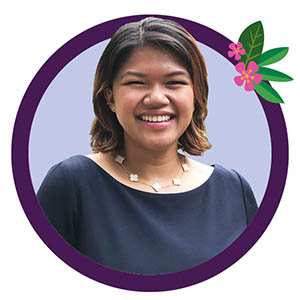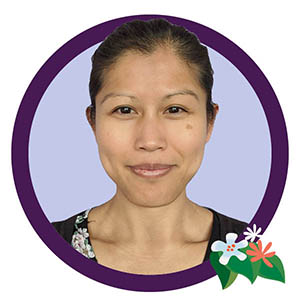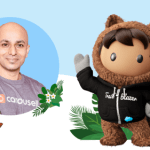Addressing the challenge of gender bias in the workplace can feel overwhelming, and it’s hard to know where to begin. Gender bias is a complex issue, and there isn’t a one-size-fits-all solution. However, even small changes can have a massive impact.
To better understand how individuals at any level of an organisation can create and influence change, we asked three professionals from beauty retailer LUXASIA for insights on how to #BreakTheBias this International Women’s Day. Avis Easteal, Tatyana Gonzaga, and Kimly Scott, who all work in different roles and regions for LUXASIA, share how they support gender equality at work and at home. Read on to learn their thoughts on the role that individuals and businesses can play in promoting gender equity.
Gender equity is good for business
Equality makes good business sense. High-performing teams that welcome diverse opinions create more innovative solutions, with more inclusive and effective workplaces. In fact, diverse groups perform better by developing ideas from myriad perspectives, solving problems with smarter outcomes.
That’s why addressing the topic of gender bias is important to ensure a fair and more cohesive workplace. Gender bias can show up in teams in the way employees are treated differently, from different pay rates to the creation of exclusive teams. Recognising and addressing this topic takes courage and action. Even small changes made at the individual level — and at every level of an organisation — can have a significant impact.
Avis Easteal: Leading with equity

Avis Easteal leads the marketing division as Regional Head of Consumer. As part of the leadership team in Singapore, Avis has pioneered many new digital innovations at LUXASIA.
During my career, the gender equality conversations have changed, and companies are adjusting their ways of working. At LUXASIA, 60% of our leadership team is female, and we have a majority of female employees. It is refreshing to be encouraged as a female leader to expand the team’s ways of working.
How to recognise gender bias
Firstly, if your meetings have only a few non-male genders and they are not contributing, you have a problem.
Within my team, the first thing I look at is parity in pay across my team. This gives a good indicator of how the organisation takes practical action.
Also, men and women promote their achievements differently. A male colleague once said that men do 80% of the job and loudly celebrate their achievement while many women are still striving to move from 97–98%. Leaders should look at results rather than just listen to the rhetoric.
We can all be part of the solution as well as the problem. How we act emboldens or diminishes the people who work with us. When all genders have a voice and equal pay, your organisation will prosper faster. Diversity of views helps you make smarter decisions.
Leaders are role models, so set your intention for equality and follow up by being bold. For example, state that gender bias is not accepted in this organisation. Then, get your HR teams to support you with the right policies, and the ability to resolve issues and live the behaviours.
Tatyana Gonzaga: Young professionals bring fresh perspectives

Tatyana Gonzaga is the Regional Digital Marketing Coordinator and runs complex customer journeys daily. Tatyana takes every opportunity to upskill with Trailhead.
In 2021, the Philippines was ranked number one in Asia for closing the gender gap. I saw how this benefitted my undergraduate studies. Even though my cohort was predominantly male, the women weren’t at any disadvantage when it came to educational opportunities.
LUXASIA ran a year-long program to cultivate emerging talent with workshops, strategic projects, and seminars. Taking part in this program, I have learned that leaders can recognise and provide opportunities for young professionals to grow and develop in their careers. This helps to cultivate a more talented and fair workforce.
I think the most important contribution of any young generation is their ideas on what type of future to build for ourselves. It’s all about fresh perspectives.
In 10 years’ time, we will be future leaders. Having a voice in the conversation allows us to shape and participate in creating this future. This includes ending gender bias and establishing a better working environment for all.
Never think the world is against you. My advice is to hone in on your own personal development. Try to embody the values you would like to make happen. Most of all, be kind, to yourself and others.
Kimly Scott: Welcoming women in tech

Kimly Scott is an Analytics Manager based in Melbourne, Australia. Kimly is a Tableau Public Ambassador, Data Queen and leads the charge on Tableau usage at LUXASIA. She is also a member of the Tableau Speaker Bureau.
When I first started working in analytics, female representation was lacking. There was no one who looked like me in senior or executive roles. As a young woman starting out my career, it was discouraging.
Now, I have two young girls and I want them to achieve anything, regardless of their gender. I always tell my girls, ‘there are no boys or girls toys.’ In that vein, I want them to grow up knowing that there are no male jobs or female jobs.
It can be hard to call out biases or inequalities when you see them. Don’t stay silent. If you feel uncomfortable starting the conversation in public, consider leaning on other women — a mentor, your manager, or a co-worker.
Over the years, we have seen a rise in educating women and girls, especially in the tech industry. There are fabulous organisations, such as She Loves Data, Data + Women, and Women in Analytics. They work to educate, elevate, and connect women. The tide is turning, but there are still many challenges.
Equality is a core value at Salesforce. We believe that businesses have the opportunity to make the world a more equal place for all. To learn more about how we’re doing that, visit our Equality site.

























